It’s my dream to have an oasis of greenery outside my home. But, seeing the concreate jungle emerging in urban cities it seems impossible.
Though it may not be a vast green jungle, I can still transform small space in my corridor into a vibrant garden with potted plants.
I started with the most common houseplant pothos, then aloe vera and now am growing vegetables in containers.
Believe me you don’t need a green thumb to have a small garden. Starting with few indoor plants, veggies and flowering plants can change the way you think about gardening.
It’s obvious that we don’t have enough budget for gardening, at-least for beginners. In this write-up, I’ll share small gardening ideas that you can easily afford to start.
13 Small Gardening Ideas on a Budget
Am not a big fan of huge list of ideas.
I believe gardening is more about self-learning. So, I would like to share a bunch of gardening ideas that can help you to build your own garden according to your space.
To keep it short, you can use vertical gardening. Just climbing plants and use wooden trellis to support them. Potted pothos in the corner and hanging baskets in the corridor can really impress your guest.
I’d personally recommend adding flowering and veggies to your gardening space. While ornamental plants fill the space with fragrance, edibles serve you with delicious food.
Without much ado, let’s now explore few interesting gardening ideas.
1. Upcycle Containers as Pots

You don’t need to drop cash on fancy planters when you’ve probably got perfect ones sitting around your house. Old tires, tin cans, wooden crates, mason jars, wine boxes, teacups, or worn-out boots can become super cool plant homes. It’s a win-win because you’re saving money and keeping stuff out of the landfill while giving your garden personality.
Just grab a drill and make drainage holes in the bottom (seriously, this is important). Paint them bright colors or leave them rustic and weathered. These makeshift planters work great for herbs, succulents, flowers, and small veggies.
2. Prioritize Low-Maintenance Plants

Let’s be honest—nobody wants to babysit high-maintenance plants that die the second you forget to water them. Stick with easy-going varieties like basil, rosemary, mint, succulents, pothos, and spider plants that basically take care of themselves.
These plants are super forgiving if you’re still figuring out your green thumb, and they don’t need fancy equipment or expensive fertilizers.
Low-maintenance options save you money in the long run because you won’t constantly replace dead plants or buy specialized products. Perennials are especially budget-friendly since they come back year after year, unlike annuals.
Native plants are another smart move—they’re already adapted to your area, naturally resist local pests and diseases, and need minimal water once established.
Also Read: 12 Low Budget Backyard Designs with Gravel
3. Propagate Plants from Cuttings

Want to know a gardening secret? You can basically get unlimited plants for free just by sticking cuttings in water.
Grab some cuttings from friends, neighbors, or plants you already have, pop them in a glass of water on a sunny windowsill, and watch the magic happen. This works ridiculously well with herbs like mint, basil, and oregano, plus houseplants like pothos and philodendrons.
Propagation saves you tons of money and it’s a great way to swap plants with other gardeners. One healthy plant can give you dozens of baby plants over time. Most cuttings take about 2-4 weeks to grow roots. This is especially handy for matching plants for borders or containers.
4. Create Your Own DIY Compost

Making compost from kitchen scraps is one of those things that sounds hippie-ish but actually makes total sense. Just set aside a bin or corner of your yard where you can toss fruit and veggie peels, coffee grounds, eggshells, leaves, and grass clippings.
In a few months, you’ll have rich, crumbly compost that’s way better than anything you’d buy at the store—and it’s totally free.
The trick is mixing “green” stuff like food scraps (nitrogen-rich) with “brown” stuff like dried leaves and cardboard (carbon-rich). Give it a stir occasionally and keep it moist but not soggy, and nature will do the rest. Avoid meat, dairy, or oily foods because that’ll attract rats and smell gross.
5. Build Raised Garden Beds

Raised beds are honestly a game-changer, especially if you’re just starting out. They drain better than in-ground gardens and you don’t have to break your back tilling hard soil.
You can build them super cheap using untreated lumber, concrete blocks, or reclaimed wood, and put them anywhere—backyards, front yards, patios.
You get to fill them with good quality soil instead of dealing with whatever crappy dirt is in your yard. They warm up faster in spring for earlier planting and longer growing seasons. They’re also easier on your knees and back. Start small with one or two beds.
Check this: 6 Low Budget Backyard Privacy Ideas
6. Use Vertical Gardening Techniques
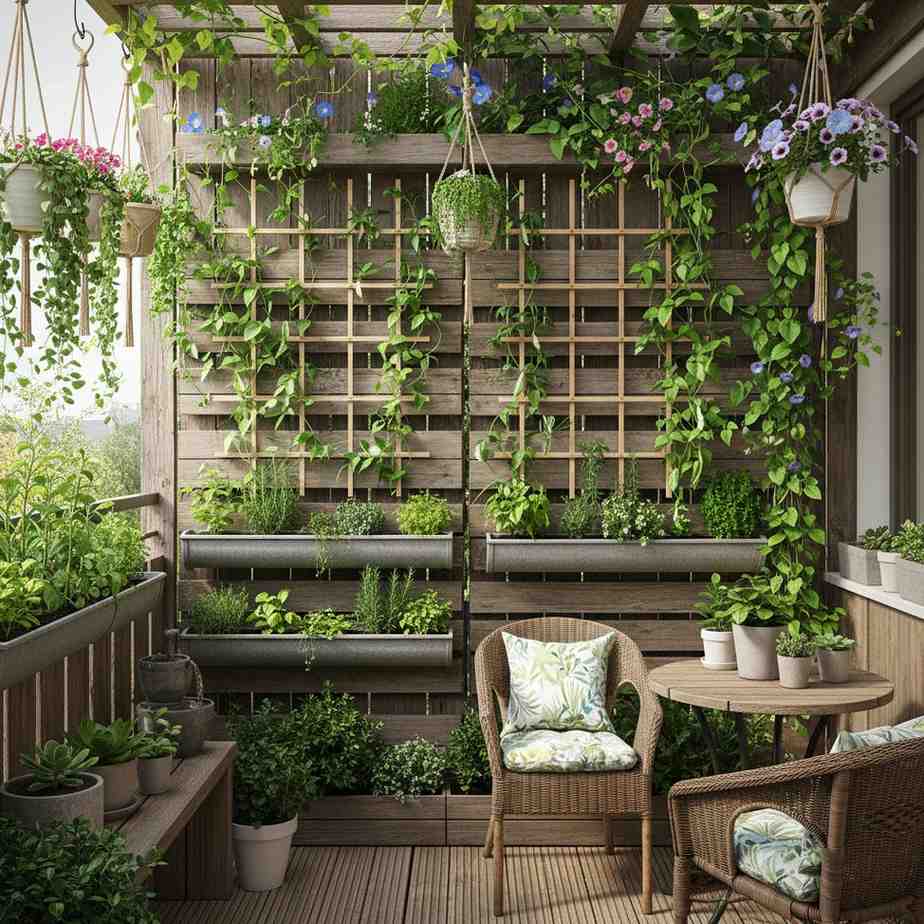
When you’re short on space, the only way to go is up. Vertical gardens let you use walls, fences, or stands to grow way more plants than ground space allows. You can DIY vertical setups using wooden pallets, trellises, hanging planters, or gutters mounted along fences.
Plants like beans, peas, cucumbers, and flowering vines are natural climbers that love growing upward. Vertical growing means better airflow around plants, fewer disease problems, and easier harvesting without bending over. Your structures can be simple bamboo stakes or fancy living walls packed with herbs and flowers
7. Add Decorative Mulch

Mulch instantly makes your garden look way more put-together. You can use small pebbles, gravel, shells, pine cones, or whatever looks good. It’s not just for looks—mulch keeps moisture in soil and stops weeds.
Here’s a money-saving tip: you can often get wood chips or bark mulch free from tree companies, city composting sites, or utility companies.
Just spread 2-3 inches around plants. It protects roots, keeps soil temperature steady, and slowly breaks down to improve soil. Gravel or decorative stones last longer and work perfectly for succulent gardens or Mediterranean plants.
8. Paint Your Fence
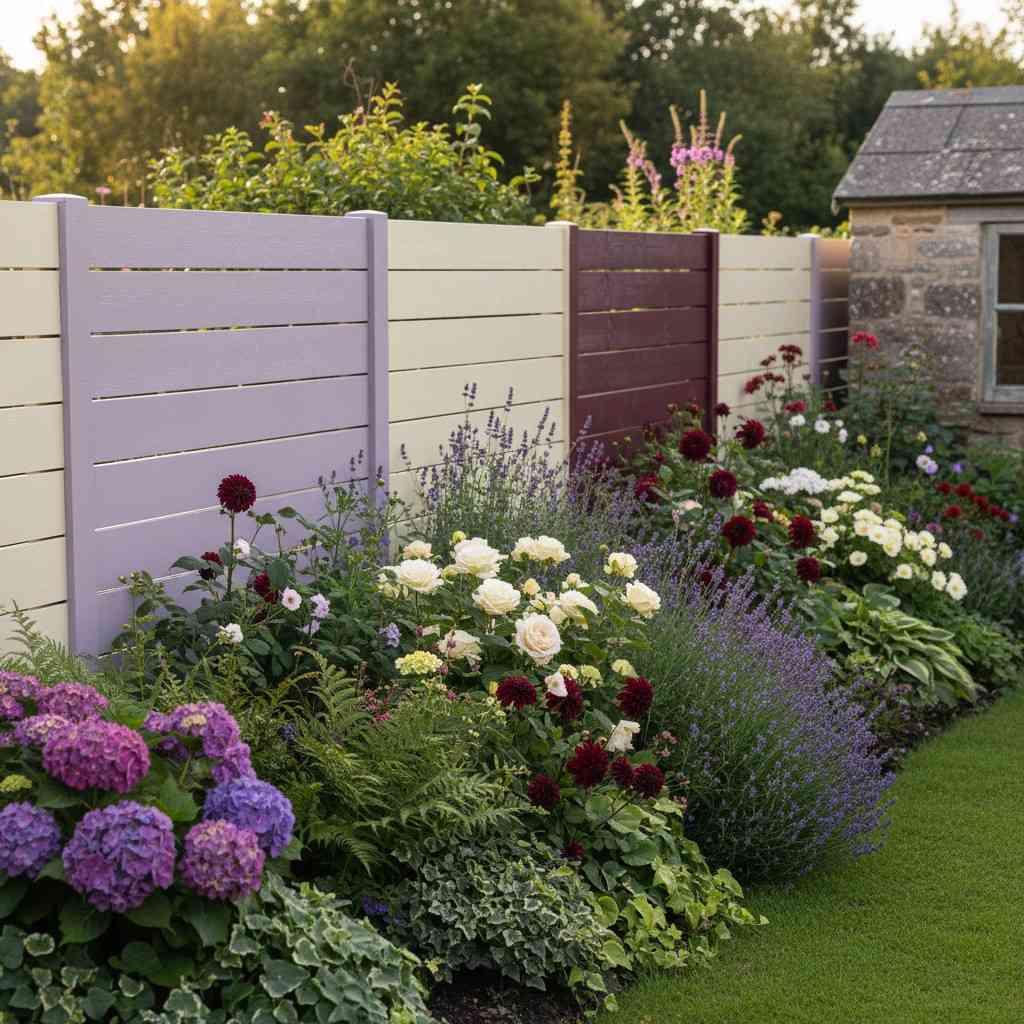
Want a quick garden makeover? Grab some paint and refresh that tired-looking fence. A fresh coat looks amazing and protects wood from weather damage. Try bold colors like lavender, cream, buff, or burgundy to make flowers pop. Darker colors make small gardens feel bigger by making boundaries recede.
This project is super cheap—just one or two pots of exterior paint and a brush or roller transforms your space. The paint extends fence lifespan by preventing rot. Match your fence to house colors or pick shades that complement your plants. It’s one of the best bang-for-your-buck projects.
9. Install a Simple DIY Bird Bath
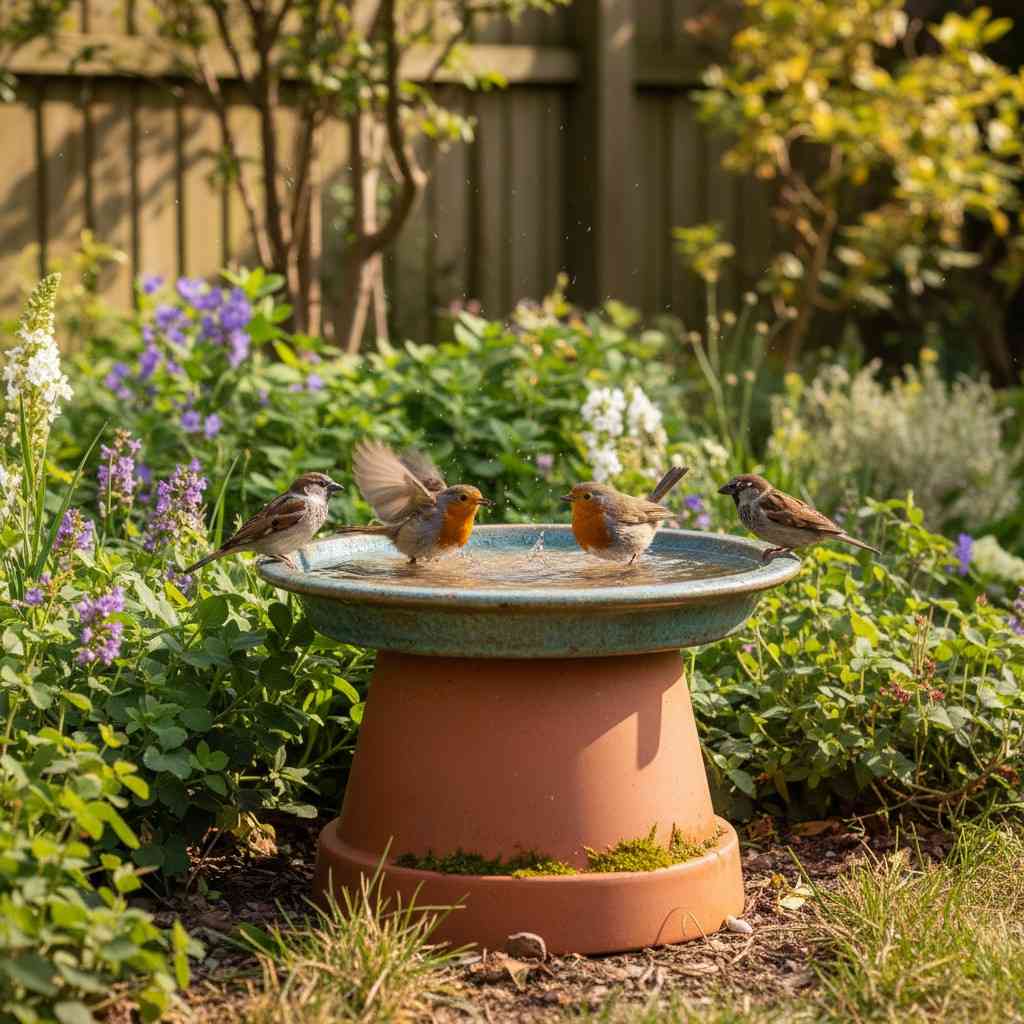
You can make a cute bird bath with just three things—a terracotta pot, a glazed saucer, and waterproof glue. Flip the pot upside down, glue the saucer on top (centered), let it dry, and fill with water. This costs way less than fancy store versions and looks just as good.
Birds will hang out regularly, eating bugs and providing entertainment. The terracotta look fits any garden style and handles weather well. Place it where you can see it but near bushes for quick bird escapes. Change water every few days to prevent mosquitoes.
Also Read: 29 Best Christmas Porch Decor Ideas
10. Grow Herbs in Small Spaces

Herbs are basically the perfect budget plant—they’re super easy to grow, don’t need much room, and you actually use them in your cooking. Grow them on windowsills, in small containers, or in raised bed sections.
Favorites like basil, parsley, cilantro, rosemary, thyme, and mint thrive in pots without needing deep containers. Growing your own means never buying overpriced grocery store packages again.
Most herbs just need good drainage and sun, making them perfect for balconies, patios, or sunny windows. You can arrange them functionally or creatively with different colors and textures. Some herbs like rosemary and thyme are perennials in warmer areas, returning yearly without effort.
11. Use Stepping Stones for Pathways
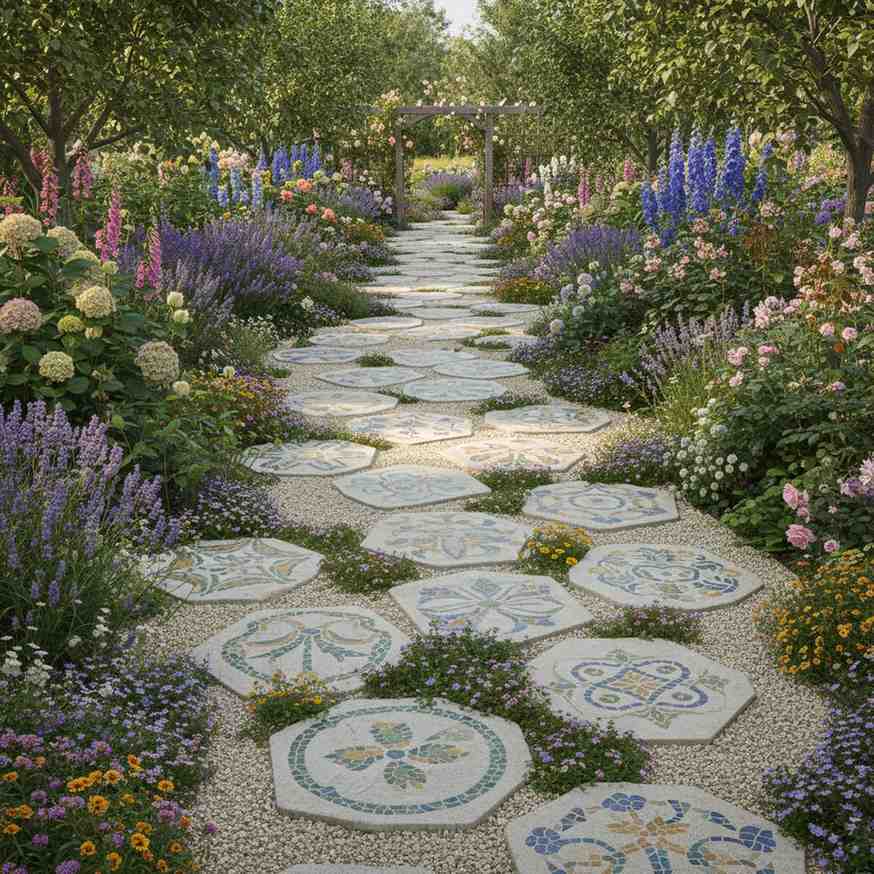
Stepping stone paths are both practical and pretty—they keep you from trampling plants while adding structure to your garden. You can use natural stone, concrete pavers, or make your own with concrete molds. They guide people through your space and make watering and weeding way easier.
Get creative by adding mosaics, engraving words, or painting designs on plain pavers. Making your own concrete stepping stones is cheap and fun. Space them about 18-24 inches apart for comfortable walking.
Paths help define different garden areas and prevent soil compaction around plant roots. Fill gaps between stones with ground cover plants, pea gravel, or mulch to finish the look.
12. Repurpose a Wheelbarrow as a Garden
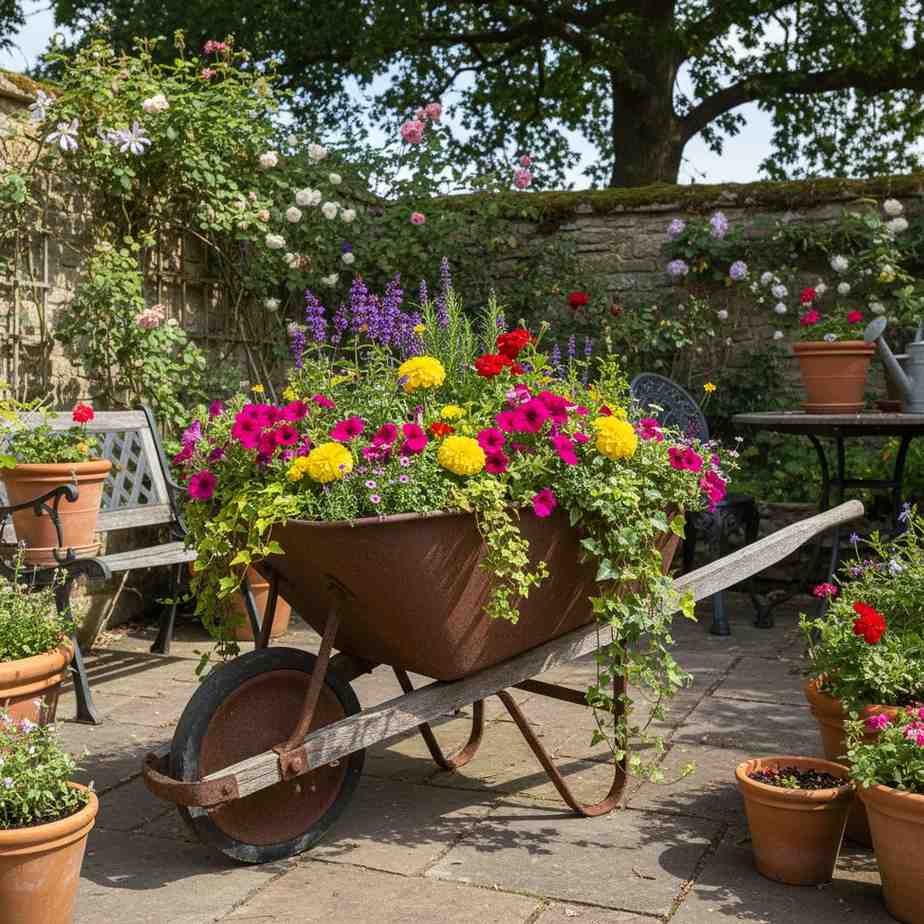
An old wheelbarrow makes an awesome rustic planter you can move around wherever you want. Just drill drainage holes in the bottom, fill with soil, and plant away. The mobility lets you follow the sun or rearrange things when you’re having people over.
Vintage wheelbarrows add character without costing anything if you already have one lying around. They’re deep enough for bigger root systems and hold up well outdoors. Paint it bright colors or leave it rusty depending on your style.
They’re perfect for seasonal displays—spring bulbs, summer flowers, fall mums, or winter evergreens. The raised height makes planting and maintenance easier on your back.
13. Add Plant Markers and Labels
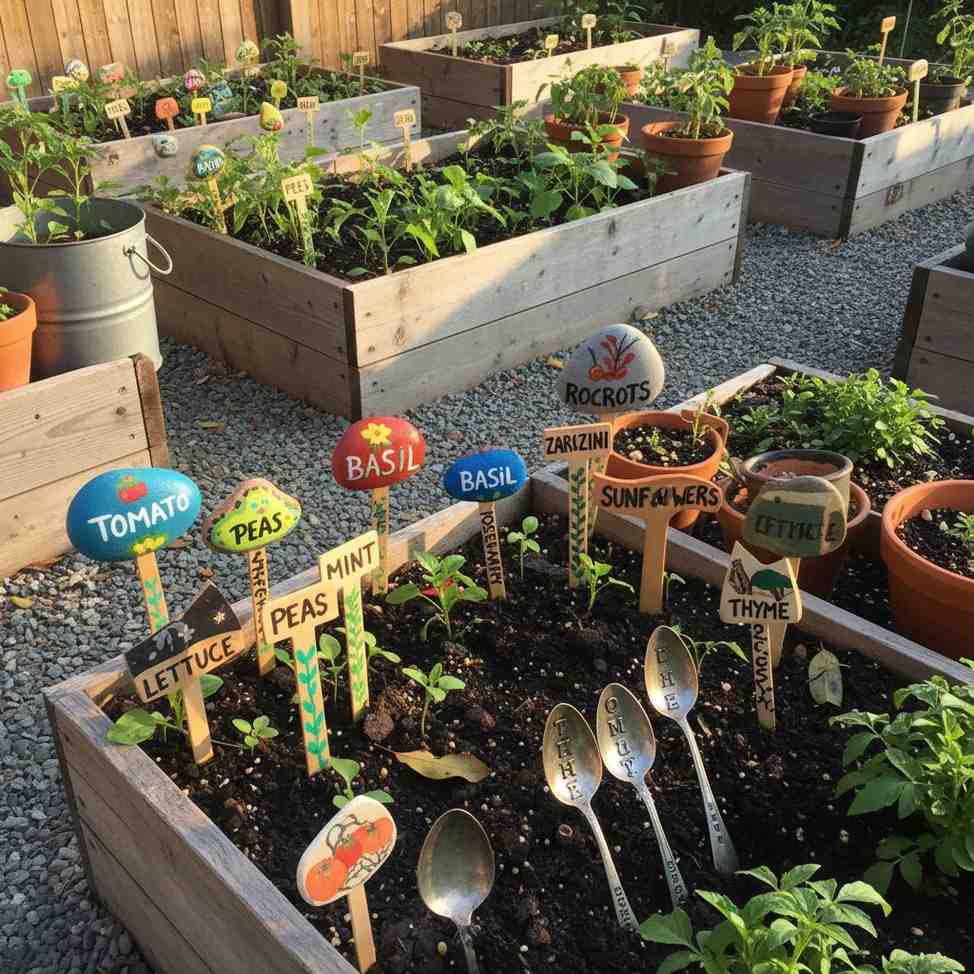
You’ll forget what you planted where faster than you think. Homemade markers from painted rocks, craft sticks, broken pottery, or old spoons help track everything. They’re especially useful for different tomato varieties or telling apart identical seedlings, plus they show planting dates and expected sprout times.
DIY markers add decorative flair while being practical. Use waterproof markers or paint so they don’t fade, and this costs basically nothing.
Conclusion
Creating an awesome garden on a budget is totally doable—you just need to get a little creative and work with what you’ve got. These 13 ideas prove you don’t need expensive gear, fancy designs, or pricey plants to have a garden you’re proud of.
By repurposing stuff, choosing easy-care plants, learning to propagate, and going vertical when space is tight, you can grow something amazing without breaking the bank.
Whether you’re dealing with a tiny balcony or a modest backyard, the best gardens come from creativity and effort, not how much money you throw at them.

Khaja Moinuddin, a computer science graduate, finds joy in gardening and homesteading. Join him on this blog as he shares his experiences in homesteading, gardening, and composting